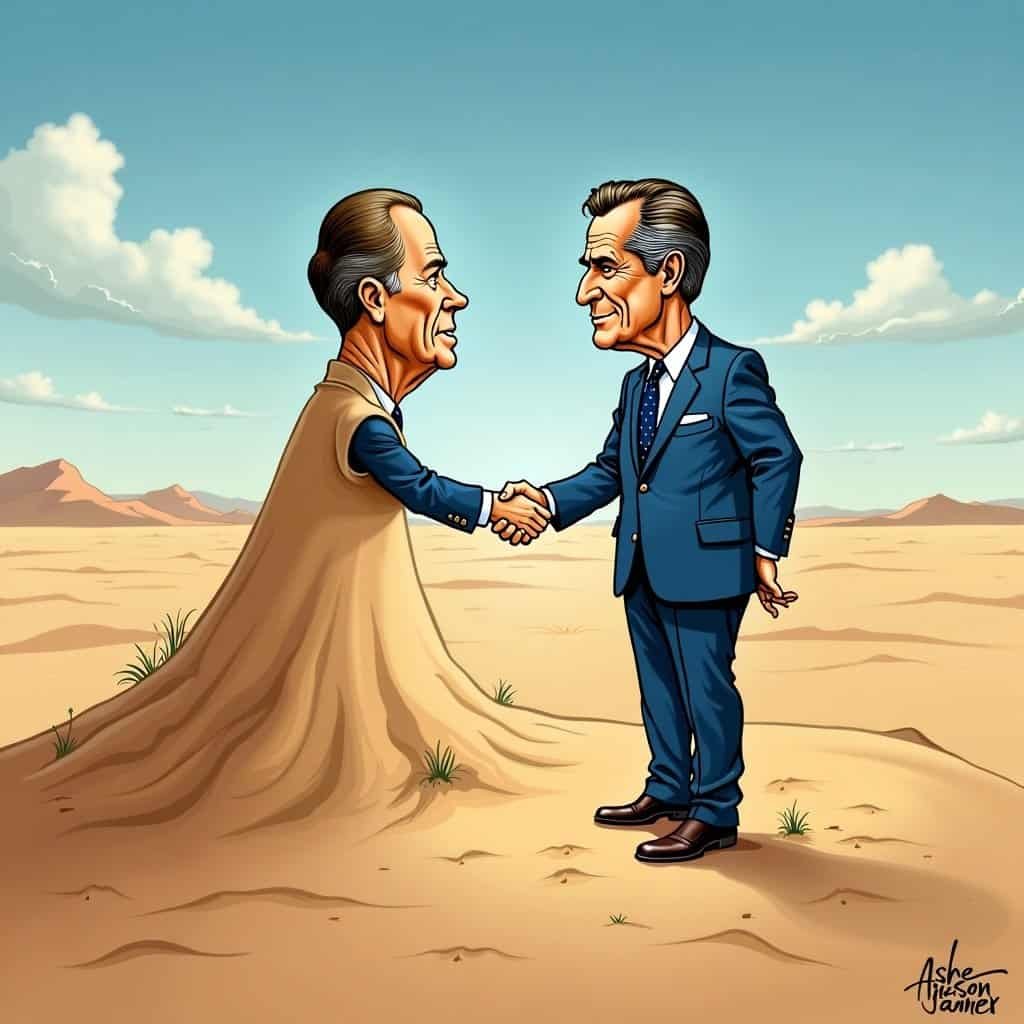Richard Nixon’s foreign policy moves were like a bull in a china shop—if the china shop was the Middle East and the bull wore a Stars and Stripes cape. This political cowboy, famous for his “I’m not a crook” catchphrase, decided to play nice with the sandy lands of oil and camels. It’s as if he thought, “Hey, why not shake hands with the folks sitting on black gold?”
Now, picture this: Nixon, the diplomatic desperado, riding into the Middle East sunset. No map, just a gut feeling and a heavy dose of “America knows best.” You’ve got to wonder, was this a stroke of genius or just a mirage in the political desert?
Cue the dramatic music! It’s time for oil debates, strategic handshakes, and enough political shenanigans to make a Las Vegas poker tournament look tame. Back then, conservative thinking was all about keeping America’s interests front and center, beefing up defense, and making sure Uncle Sam’s way of life stayed as American as apple pie. And let’s face it, if you wanted to keep those gas-guzzling behemoths on the road, you’d better start making nice with the countries sitting on all that oil.
Nixon’s Middle East Strategy: A Balancing Act
Nixon’s Middle Eastern adventure wasn’t just about playing in the sandbox. It was part of his grand plan to keep the world from going kaboom. He was trying to stabilize a region that could blow up faster than a firecracker at a Fourth of July barbecue. Imagine trying to mix oil and water—that’s child’s play compared to navigating Middle East politics.
Nixon’s Middle East Policy Ingredients
- A dash of realpolitik
- A sprinkle of ally support
- A generous helping of oil interests
- A pinch of American exceptionalism
- Stir well and hope for the best
Sure, we can call it realpolitik if we want to sound fancy. But what really mattered was how Nixon stood by his allies (when it suited him). His diplomatic dance helped grease the wheels—or should we say, oil the pipelines—of cooperation. It shaped a U.S. foreign policy that was more grounded in reality than in pie-in-the-sky idealism.
Now, those bleeding-heart liberals might prefer to swap practical solutions for flowery speeches about world peace. But here’s the cold, hard truth: it’s the American way to be pragmatic. (Cue the majestic eagle screech!)
Simplifying the Complex: Nixon’s Approach
Some folks might yammer on about the intricacies and hurdles of Middle East relations. But let’s break it down to the basics: America needed stability and wanted that sweet, sweet oil to keep the economy purring like a well-oiled machine. And through all the political acrobatics, Nixon never quite hid his conservative chops. He made sure Uncle Sam came out looking like the cool, collected pilot navigating through the stormy skies of global politics.
History buffs love to dig into these old stories and argue about who did what right or wrong. Was Nixon driven by duty, the spirit of the times, or just his own cunning? Whatever the case, his Middle East escapades tell us a lot about the man himself and the conservative values he was supposed to be championing.






